The Sacrament of Reconciliation is held every Saturday from 3:45pm-4:15pm in the church
If you would like some extra spiritual guidance and counsel, you can schedule an appointment with the pastor for another time.
Explanation of the Sacrament of Reconciliation
Below is a simple outline that can navigate you to one of the five sections
Introduction
Human beings have worth and dignity because God made us. God also placed a desire within us to choose and do the “good.”
At times, however, we don’t choose the good. The proof of this can be seen by looking at the news, where we see many examples of bad choices and evil.
God has given us radical freedom to commit horrible evils but also to exercise heroic charity in the pursuit of the good.
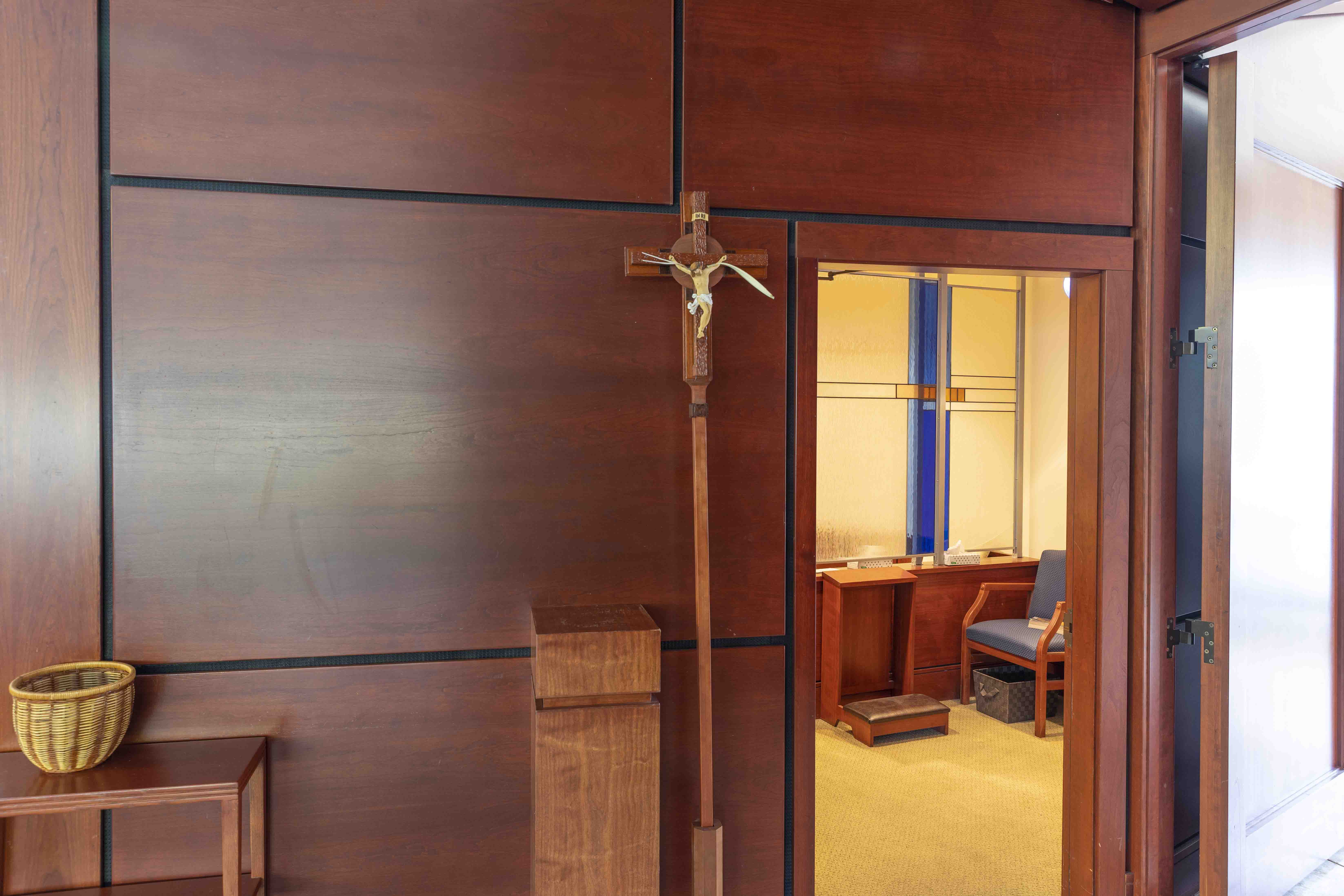
Because we have freedom, we are responsible for our choices. Sin is defined in the Church as freely choosing to do wrong when we know something is wrong. “Sin is an offense against reason, truth and right conscience; it is a failure in genuine love for God and neighbor” (Catechism of the Catholic Church, #1849). If we commit a bad deed on accident, this isn’t considered a sin.
We as human beings are social creatures. We live in a society and we are all connected. When we sin, we affect our relationships–even when it doesn’t seem to be the case. When we commit a sin against someone, we harm that relationship. Serious sin can end a relationship.
The Sacrament of Reconciliation is a key means by which God can reconcile us to one another and to himself after we have sinned. It is an opportunity to heal a relationship, to unburden ourselves, to experience forgiveness and God’s Grace and to receive counsel. This Sacrament can set us free from habitual sin and transform our desires.
Names for the Sacrament
There are various terms we have for this sacrament. Some are listed below. Probably the most appropriate name is the Sacrament of Reconciliation because it captures what is the overall goal of the sacrament. The other names focus primarily on only certain aspects of the sacrament.-
- Penance: The sacrament is given this name because the sacrament leads us to do penance and make amends/restitution for our sin.
- Sacrament of Conversion: This name captures how Jesus called people to conversion. He said, “Repent for the Kingdom of God is at hand” (Matthew 4:17). This call of Jesus is made sacramentally present for us and we are given the grace and strength to change.
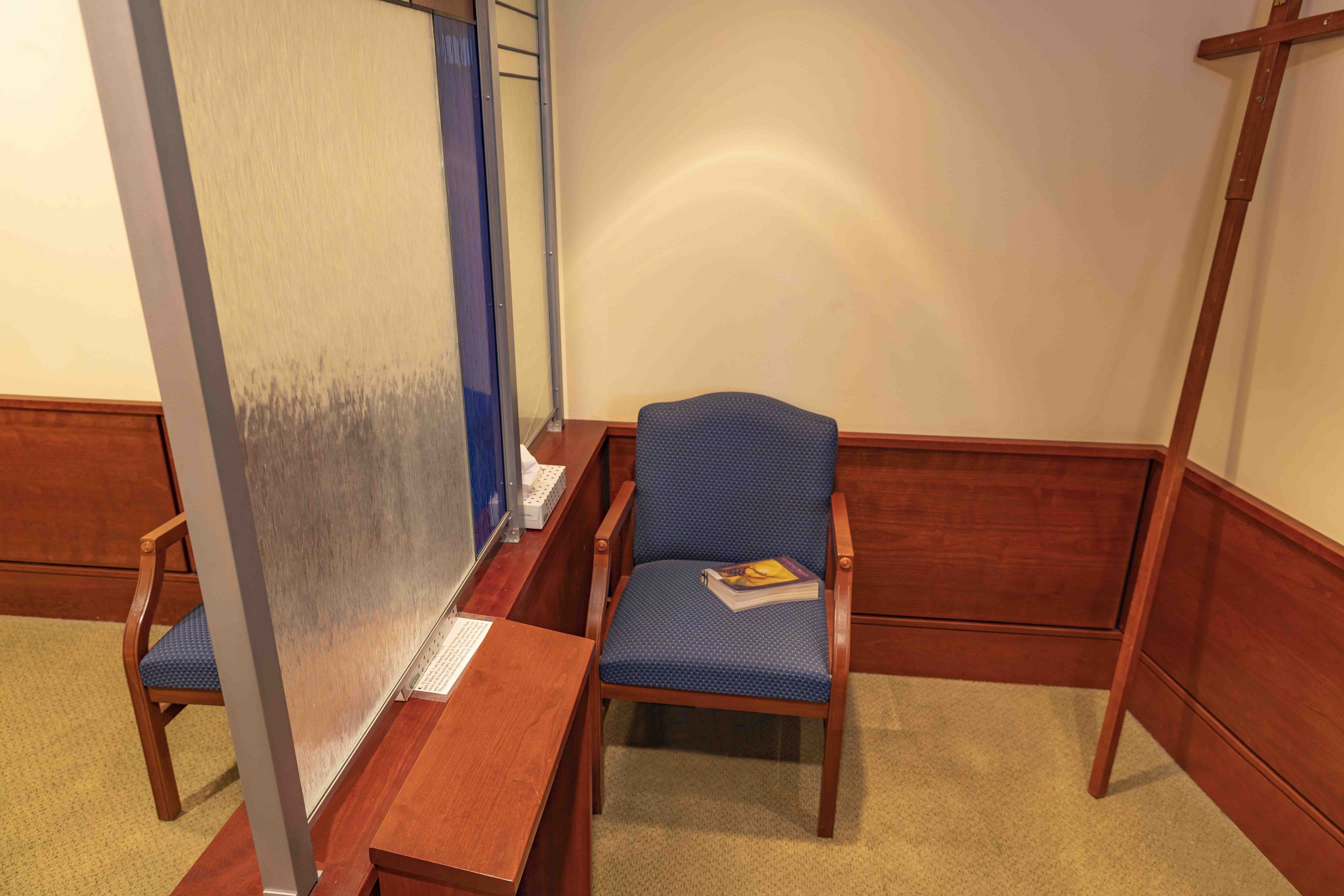
- Confession: This is one of the most common names for this sacrament. It is an important aspect of the sacrament, however, it is only one aspect of the sacrament. It refers to us honestly confessing what we have done wrong. It also expresses our belief/confession of God’s Holiness and Justice coupled with his Great Mercy!
- Sacrament of Forgiveness: It is through the priest’s words of absolution that we receive God’s forgiveness for our sins.
- Sacrament of Reconciliation: This sacrament restores our relationship with God and with our brothers and sisters. We experience God’s love.
History
This sacrament goes back to Jesus. He spoke and ate with sinners and forgave them. He focused his ministry toward sinners. “Those who are well do not need a physician, but the sick…I have not come to call the righteous, but sinners” (Matthew 9:12-13).
Jesus extended forgiveness to the paralyzed man, the woman caught in the act of adultery, the woman at Simon the Pharisee’s house, the “good thief” on the cross…
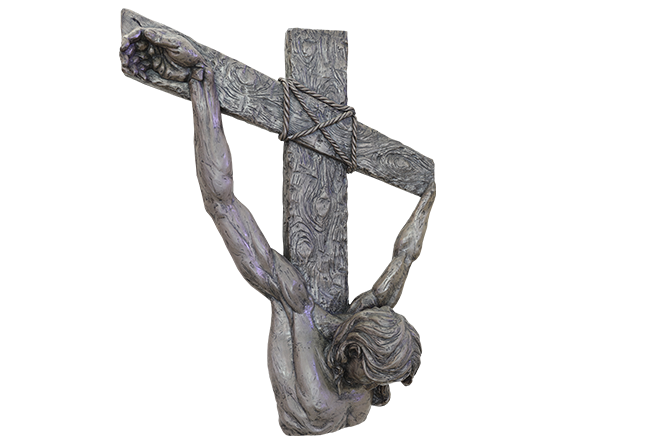
Jesus gave the Apostles the authority to forgive sins: “If you forgive the sins of any, they are forgiven; if you retain the sins of any, they are retained” (John 20:23). In the early Church St. Paul gave counsel on what to do when someone sins.
During the 2nd to 5th Centuries, venial sin was forgiven through attending Mass and through prayer, fasting and works of mercy. However, Mortal sin was forgiven through a long process of Penance which could last for years depending on the gravity of the sin. The penitents were assigned certain penances to complete over a period of time. When these were completed, the penitents confessed their sins publicly to the bishop in a special ceremony. The public confession reflected the understanding that sin affects the whole community, not just the sinner. The Church had a strong sense of the seriousness of sin and some thought that repeated reconciliation would cheapen God’s Grace. Thus, forgiveness was given only once in a lifetime. For this reason, many people postponed seeking this sacrament until the end of their lives.
During the 6th Century the practice of private confession began among Irish monks. Typically, an older, wiser monk would hear the confession of a younger monk, give him counsel and offer forgiveness. This eventually spread to the whole Church.
In the 13th Century, St. Thomas Aquinas fleshed out more of the theology of the sacrament. He said that the sacrament is a sign and instrument of forgiveness. He clarified that true contrition (sorrow) is what wipes out the sin and that the sacrament was necessary for the forgiveness of mortal sin. Finally, he maintained that both the penance and the absolution make up the sacrament.,
Why confess to a priest?
When we sincerely ask God in prayer for forgiveness, he forgives us. So, why do we need to go to a priest?
- Sin is relational and thus it affects God and our fellow human beings. The Priest stands in for both. He speaks Christ’s words of forgiveness and he reconciles us to the rest of the body of Christ as well.
- We believe that we encounter Christ in the Sacraments. In the Sacraments Christ uses the priest and physical things through which to impart spiritual grace. In particular, we experience his mercy and love in this Sacrament. Through these we can be set free from habits of sin. “If the Son sets you free, you will be free indeed” (John 8:36).
- It is beneficial for us to make an effort to make amends when we sin and to share our sin with someone and to hear the words of forgiveness. It is freeing to get our sins out in the open (within the confessional).
- We are strengthened through the experience of mutual prayer.
- The priest can give us spiritual guidance, help to banish the lies we’ve been listening to and foster growth in our spiritual life and real life.
- This sacrament is one of the few places where we can go to get something off our chest anonymously and confidentially in order for healing to occur.
How to go to the Sacrament
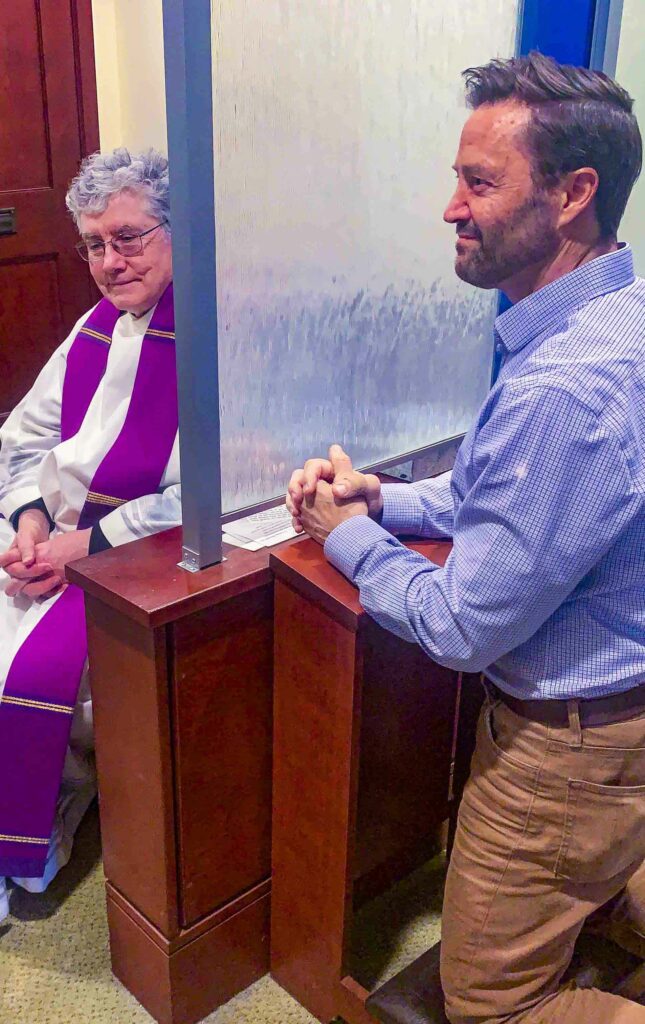
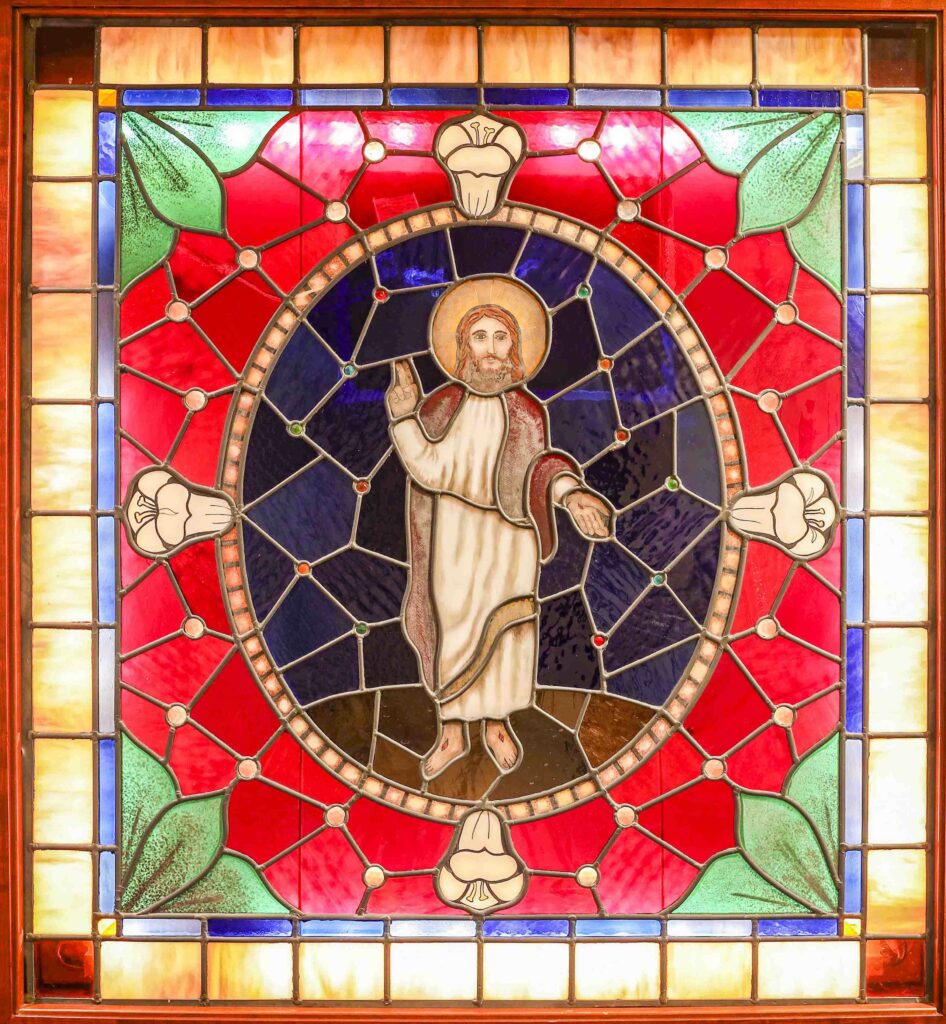
Stained Glass Window from the former St. Anthony Church which now hangs in our Confessional. It depicts the Risen Jesus who is showing the wounds of his crucifixion and also offering a blessing with his right hand. After his Resurrection, Jesus says, “Peace (Shalom)” be with you.” This is a word of forgiveness and also signifies the Old Testament hope for God to give them rest from their enemies.
- Before you come: Reflect on the ways you have failed in the love of God and neighbor. This is called an Examination of conscience.
- Choose to go face to face or anonymous:
- Greeting: The priest will start with the Sign of the Cross. Then he will say, “May God, who has enlightened every heart, help you to know your sins and trust in his mercy.” The Pentitent responds with, “Amen.” Then, the priest might read a prayer or scripture.
- Your own greeting: “Bless me Father, for I have sinned, it has been ______ days/months since my last confession.”
- Confession: Confess your sins. You don’t have to give a laundry list. Choose the ones most grievous to you.
- Counsel Given: The priest may give you some counsel/ advice/ direction. Sometimes this can be short, sometimes longer.
- Penance suggested: The priest will suggest a penance for us to do after we leave the confessional. Penance shows our repentance of heart. It also concretizes steps to avoid the problem in the future. It can be very effective when the penance matches the offense.
- Act of Contrition: A prayer expressing sorrow for sin and a desire to avoid it in the future. You can use one of the traditional formulas like is written below or you can do it in your own words.
- Absolution: The priest tells the penitent that they are forgiven in the name of the Trinity.
- Dismissal: Scripture may be read or the priest may simply offer a sign of peace.
One Traditional Act of Contrition
My God, I am sorry for my sins with all my heart. In choosing to do wrong and failing to do good, I have sinned against you whom I should love above all things. I firmly intend, with your help, to do penance, to sin no more, and to avoid whatever leads me to sin. Our Savior Jesus Christ suffered and died for us. In his name, my God, have mercy.
